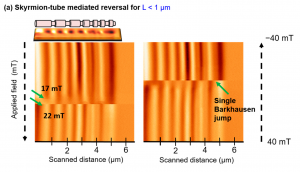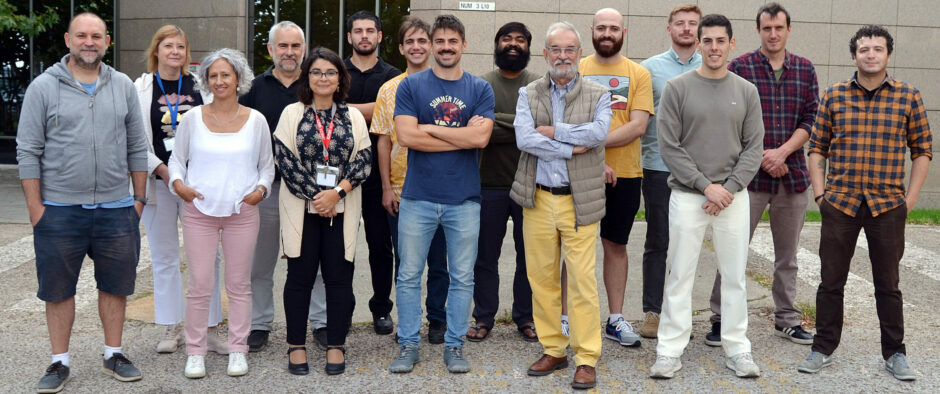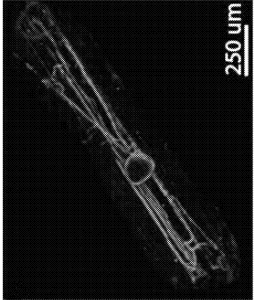“Evidence of Skyrmion-Tube Mediated Magnetization Reversal in Modulated Nanowires”
E. Berganza, J. Marqués-Marchán, C. Bran, M. Vazquez, A. Asenjo and M. Jaafar
Materials 14 (2021) 5671
DOI://doi.org/10.3390/ma14195671
Magnetic nanowires, as individual building blocks for spintronic devices, constitute a well-suited model to design and study magnetization reversal processes, or to tackle fundamental questions, as the presence of topologically protected magnetization textures under particular conditions. Recently, a skyrmion-tube mediated magnetization reversal process was theoretically reported in diameter modulated cylindrical nanowires where a vortex nucleates at the end of the segments with larger diameter and propagates, resulting in a first switching of the nanowire core magnetization at small fields. Here, we show experimental evidence of the so-called Bloch skyrmion-tubes, using advanced Magnetic Force Microscopy modes to image the magnetization reversal process of FeCoCu diameter modulated nanowires. By monitoring the magnetic state during applied field sweeping, a detected drop of magnetic signal at a given critical field unveils the presence of a skyrmion-tube, due to mutually compensating stray field components.

This study is a collaboration between our GNMP group and the Institute of Nanotechnology, Karlsruhe Institute of Technology (KIT), Germany and the Departamento de Física de la Materia Condensada and Condensed Matter Physics Center (IFIMAC), and the Instituto Nicolás Cabrera, at the Universidad Autónoma de Madrid.


